If you want the most perfectly moist, flavorful, and juicy Thanksgiving Turkey, my dry brine turkey recipe is what you’re looking for. All you need to do is rub the turkey down with salt, seasonings, and fresh herbs. Then, place the turkey in the fridge and let the dry brine work its magic for the next 48 to 72 hours.
That’s all you need the prep you need to do, and you’re on your way to enjoying the best turkey you’ll ever eat!
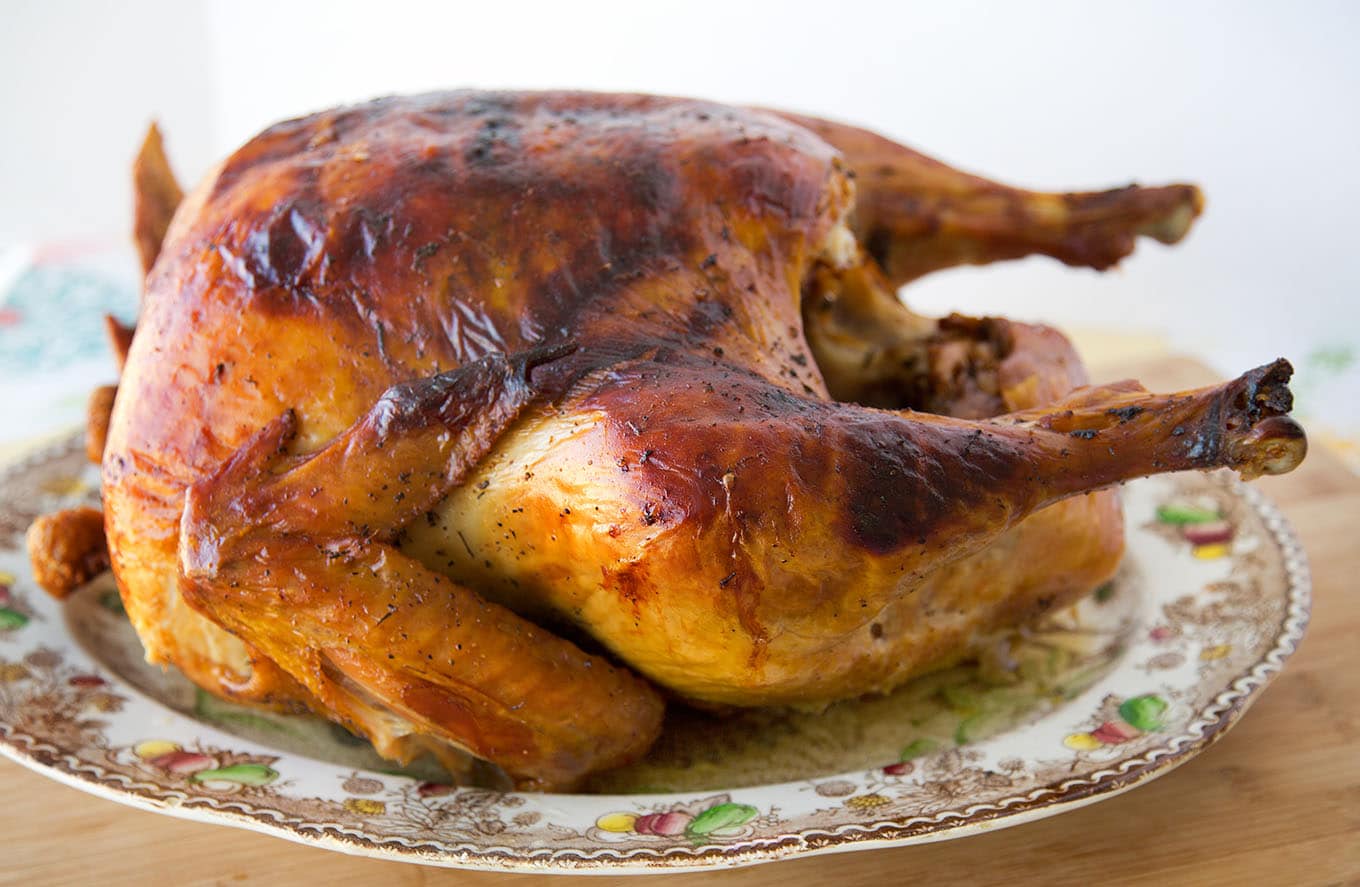
When it comes to cooking a turkey, what you do before it goes into your oven makes all the difference in the world.
Don’t be intimidated by the thought of cooking a turkey. Because I’m here to share my dry brining and roasting methods to make your holiday turkey the star of the holiday dinner
There are different thoughts on brining a turkey, with the choices being wet brine or dry brining. While both techniques will help you cook the most succulent turkey you’ve ever had, the smartest, easiest way to achieve the best results every time is with a dry brine.
It doesn’t matter if this is your first Thanksgiving dinner, my dry-brine method will make you look like a seasoned veteran of Thanksgiving and turn out an impeccably juicy, flavorful bird.
If you’re looking for a non-traditional dessert for the holidays, my Tiramisu will be the perfect ending to your holiday meal.
Ingredients
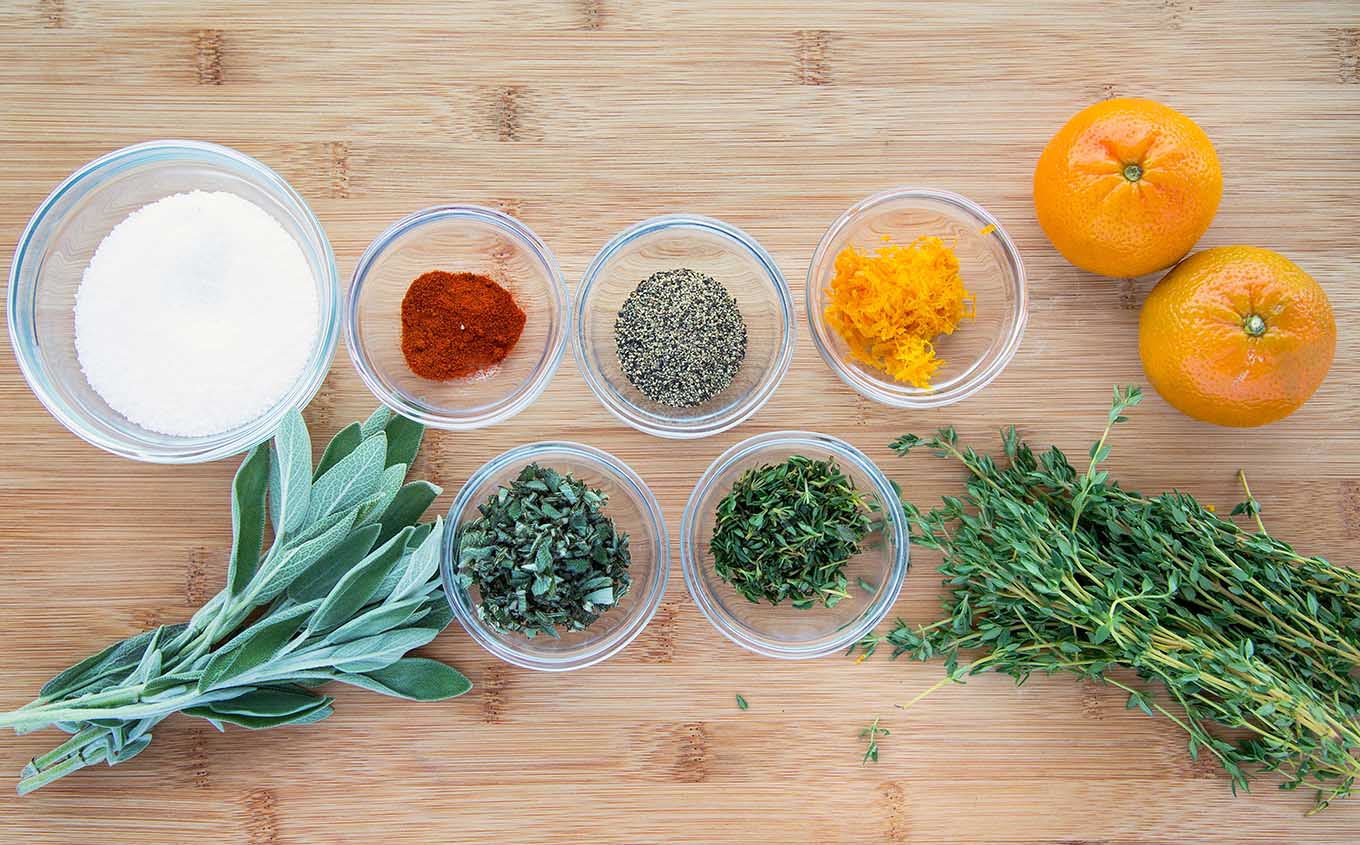
Let’s start by gathering the ingredients we need to dry brine our turkey. In Chef Speak, this is called the Mise en Place, which translates into Everything in its Place.
Not only does setting your ingredients up ahead of time speed the cooking process, but it also helps ensure you have everything you need to make the dish.
- Kosher Salt
- Black Pepper
- Smoked paprika
- Citrus zest
- Fresh thyme
- Fresh Sage
Do I have to use specific herbs and spices to dry brine a turkey?
That’s a tricky question because if you want a traditional Thanksgiving turkey, the answer is yes.
But If you like specific flavorings and aren’t into traditional Thanksgiving flavors, then by all means, have fun substituting spices that you like.
Recipes should be used as guidelines, and in all honesty, the salt is the only ingredient you really need for dry brining; the rest are added for flavor.
Why Should I dry-brine my turkey?
When you’re dealing with a large piece of meat like a whole turkey, it’s easy to overcook it into a dry, flavorless disaster. Dry Brining gives the dry brine mixture time to penetrate into the meat.
Dry brining (dry rub) is a way to inject both flavor and moisture into a turkey, giving you a flavorful, moist, roasted turkey.
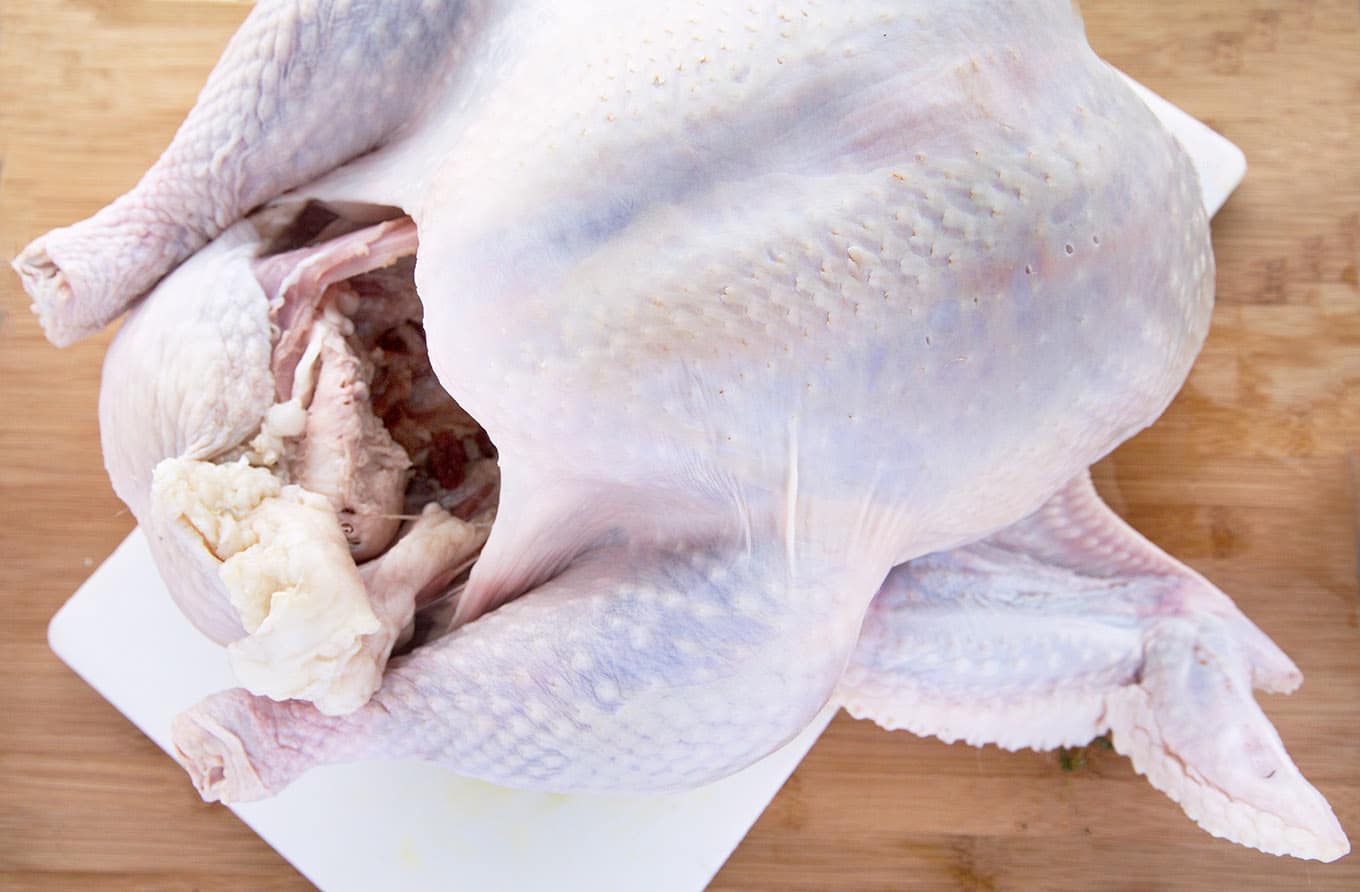
Rule #1 of Dry Brining
The larger the piece of meat, the more time is needed for the brine to be effective.
A dry brine, also called pre-salting, involves rubbing the salt, seasonings, and/or sugar directly onto the meat and skin and then letting the meat rest in the refrigerator for a period of time before cooking. During the process of dry brining, the salt draws out the juices through osmosis.
As the salt dissolves into the juices, it begins turning into a natural brine without any added liquid. This Natural brine is then reabsorbed into the meat and starts breaking down the tough muscle proteins. That is why this process needs up to 3 days to complete.
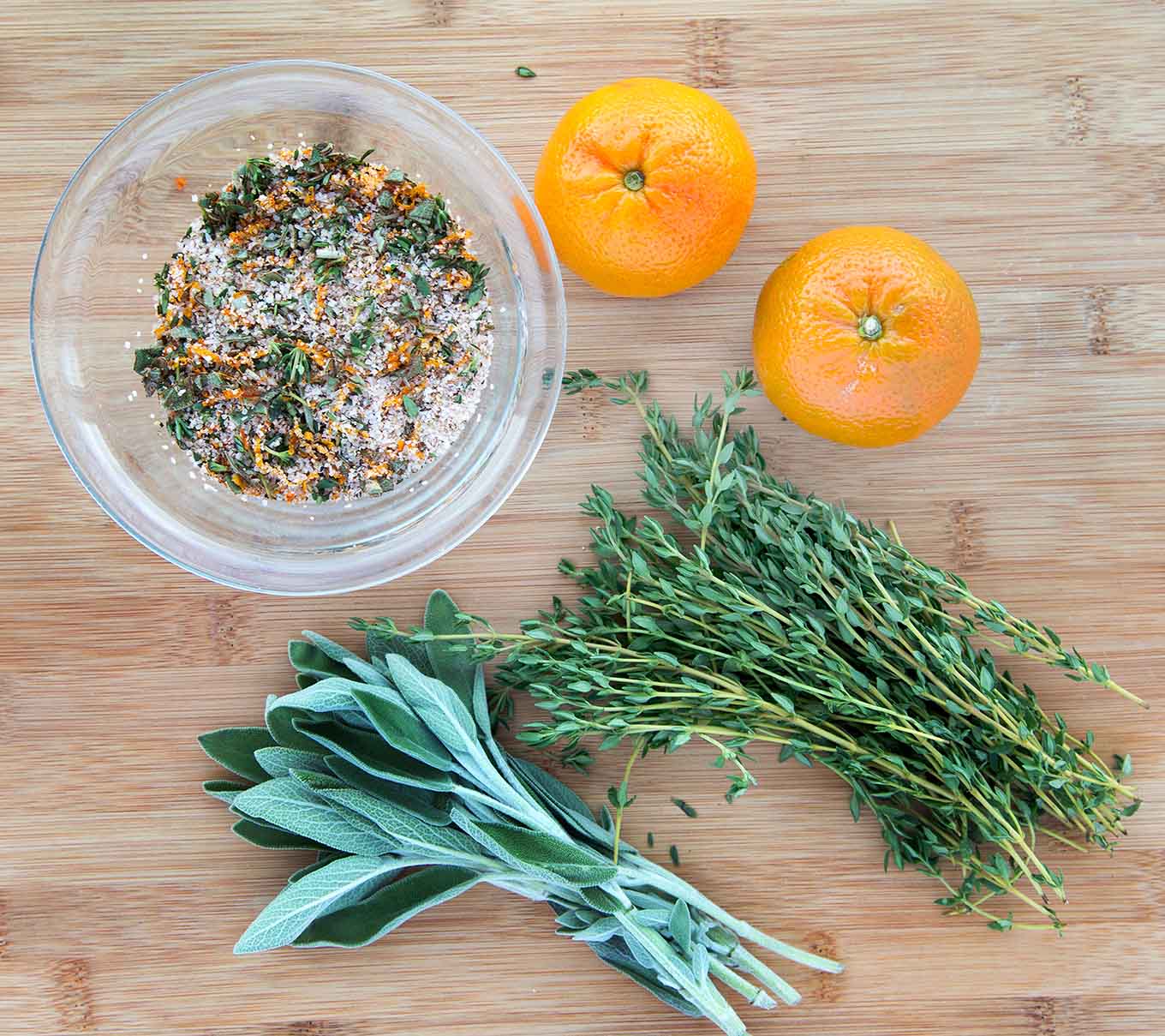
How to thaw a frozen turkey
The best way to thaw your turkey in the refrigerator in its original packaging. General defrosting times are 24 hours for every 4 pounds of Turkey.
If you have no choice and must thaw your turkey quickly, fill the kitchen sink with cold water and put the turkey in it, breast side down.
Make sure to completely submerge the turkey in water (in its original packaging) for the quick thaw method. Make sure to change the water every 30 minutes. This defrosting method will take 30 to 40 minutes per pound of turkey.
*When finished thawing the turkey, make sure to clean and disinfect the sink, spigots, and all surrounding surfaces.
*Don’t leave the turkey out to thaw on the countertop.
Chef Tips
- Don’t buy a preseasoned or kosher turkey (pre-salted) or self-basting turkeys. I always look for free-roaming or a heritage bird. But most importantly, no added salt.
- Make sure your turkey is thawed if you buy a frozen turkey. *Buy your turkey early enough so that it’s thawed and ready to brine on the Monday before Thanksgiving.
- It doesn’t have to be a whole turkey; you can dry brine a turkey breast.
- Getting under the skin of the turkey and applying the brine directly to the meat will make a tastier, moister turkey. If you’re only going to brine the skin, try and brine it for the full 72 hours.
- Don’t rush dry brining. To enjoy the best turkey you’ll ever have, you need to give it enough time to be effective. 2 days is the minimum, and can go as long as four days if you’re working with a 20-pound plus bird. *Any length of time you can brine the turkey is better than not brining the bird.
- You can use any herbs that you like, but the salt really does matter. Use Morton’s Kosher Salt for the best results. Diamond Kosher salt is a larger grain; if you use Diamond, increase the amount of salt by half. Don’t use table salt, it’s too fine and will make the turkey too salty.
- If you don’t have Kosher Salt, you can use Coarse Sea Salt or Coarse Himalayan Pink Salt because of the size of the coarse grains.
*The standard is one tablespoon of salt for every 5 pounds of turkey, but I like to go a little below that at one tablespoon of salt for every 6 lbs. So if you’re turkey is smaller, adjust the amount of salt and herbs.
Does it Matter Where I Apply the Mixture?
It does make a difference where you apply the dry brine. Separating the skin from the meat so that some of the dry brine can be rubbed directly on top of the meat (below the skin) will give you the best results.
If you apply the brine directly on the skin, it will need more time to penetrate the skin and get to the meat. The breast will also get more of the dry brine than the rest of the turkey. The turkey breast has the largest amount of meat on a conventional turkey.
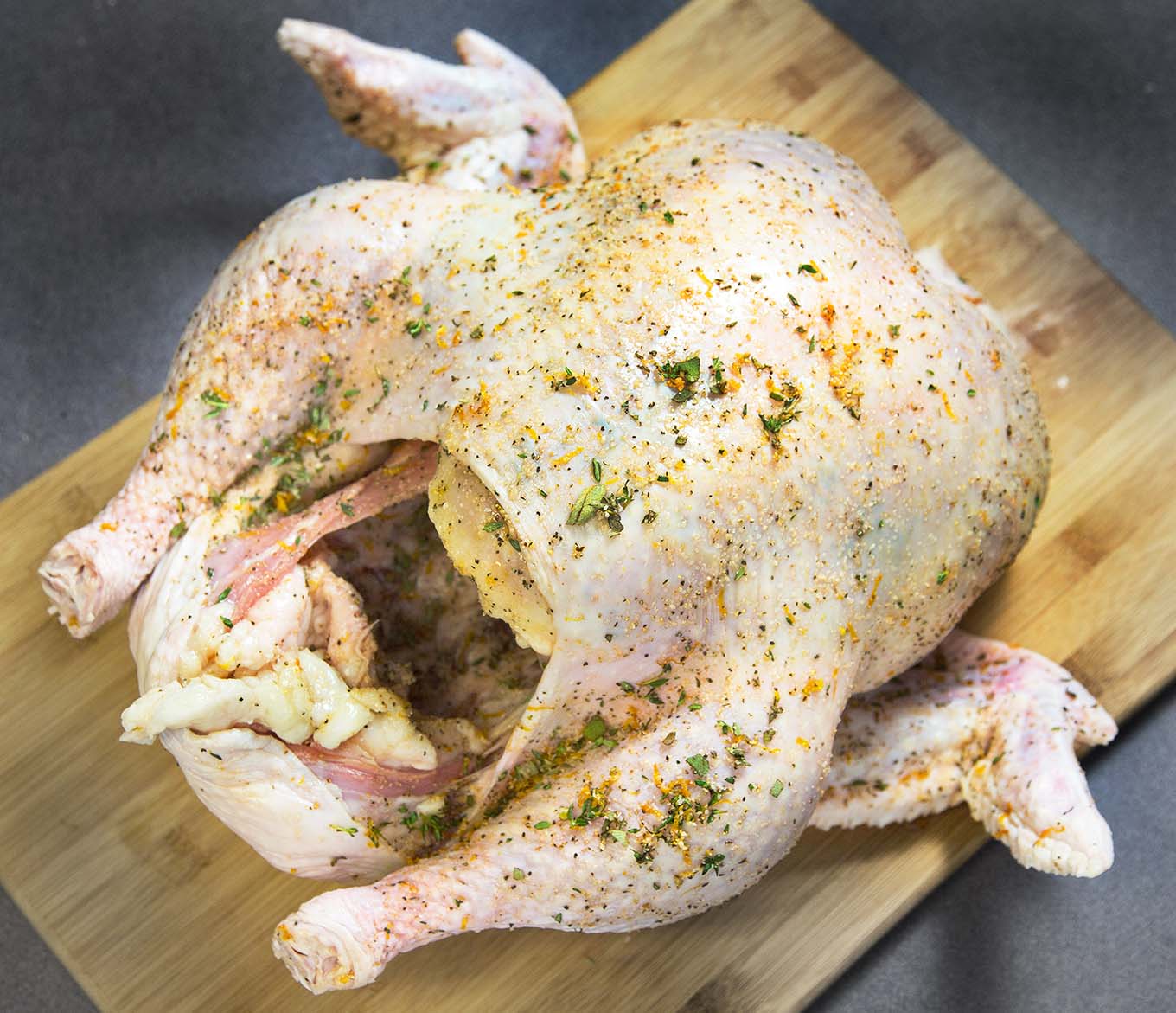
- After applying the dry brine, place the turkey breast side up in a roasting pan. Cover the turkey securely using plastic wrap. Or place it into a small plastic bag and seal it, removing as much of the air as possible. Refrigerate for 48 – 60 hours.
- Remove the plastic wrap and keep it refrigerated uncovered for the last 12 hours of brining. This will help crisp the turkey skin.
Can I use Dry Herbs?
Yes, you can, although I prefer fresh herbs. You can find them at most grocery stores in convenient little plastic containers. If fresh herbs are not available, by all means, use dry herbs. You can also add any other herbs or aromatics that you like.
Should I cook a Heritage Turkey Differently?
A heritage turkey is more elongated with drumsticks that are a good 1 to 2 inches longer than a modern bird, extending well beyond the tip of the breast.
Because of its more elongated shape, a heritage turkey cooks a little more quickly than a conventional turkey, so the biggest danger is overcooking. To make sure your Heritage Turkey is not overcooked, follow my recipe and change the cooking times.
Roast an unstuffed turkey at 425° for 20 minutes, then turn down the temperature to 325°F until the internal temperature of the thigh meat reaches 155°F.
Cooking 15-20 minutes per pound for the total cooking time. That being said, I would start checking the internal temperature 2 hours after the second phase of the process using an Insta-read thermometer in the thigh.
Also, make sure to allow 1-½ lb. per person compared to about one lb. for a conventional turkey. As an example, expect a 12-lb. heritage turkey to feed about eight people. Also, keep in mind that you’ll have as much dark meat as light meat. A conventional turkey will have more white meat.
Chef Tips for Roasting
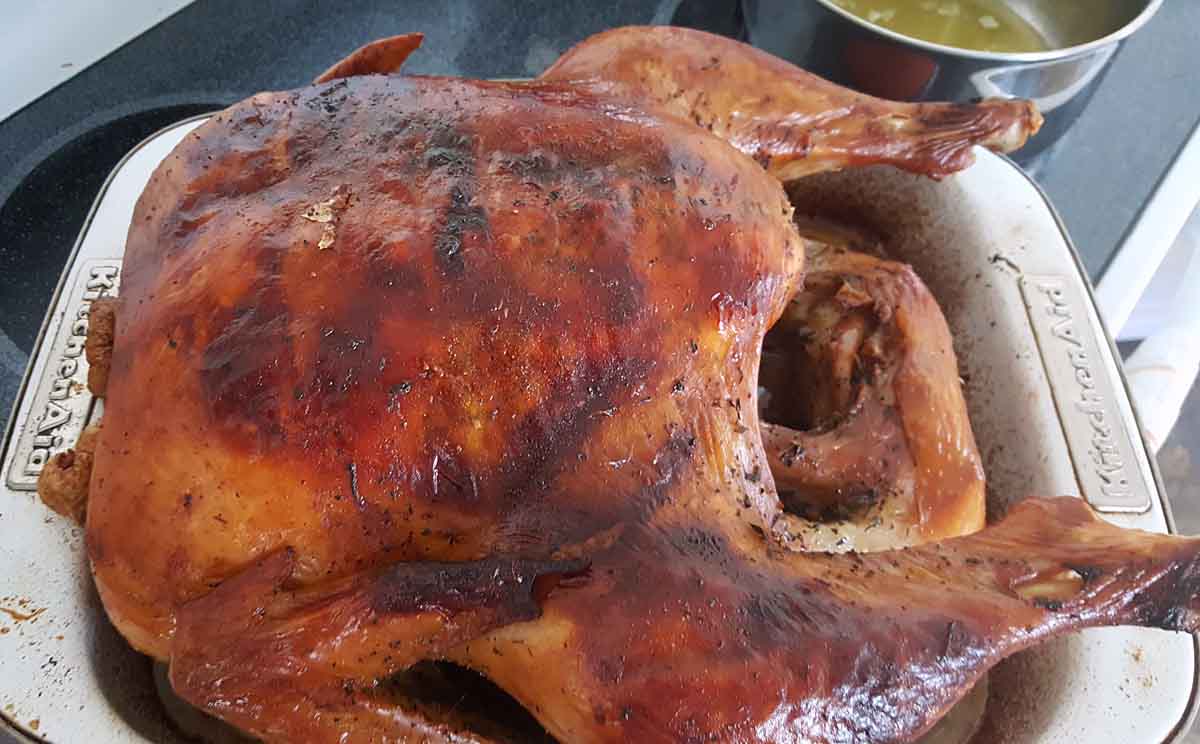
- Set your oven rack in the bottom third of the oven.
- Let the turkey sit out of refrigeration for about 30 minutes so it can come to room temperature before roasting.
- Allow the turkey to sit at room temperature for one hour before roasting. **Do Not Rinse The Brine Off Turkey
- Start off roasting the turkey at 425°F, and roast upside down for the first 45 minutes. At the end of that time, very carefully turn the turkey over with the breast side up to continue cooking.
- You’ll find that some ovens have cold spots. This is why it’s a good idea to rotate the turkey halfway through and baste for even cooking and browning. Keep some turkey or chicken stock handy in case your turkey doesn’t produce enough juice during the roasting process, and use that for basting if necessary.
- Always use an instant-read thermometer to ensure that your turkey has been cooked properly. Insert the thermometer into the thickest part of a thigh without touching the bone registers. Your turkey will be done when the thermometer reaches 165°F. It will continue to cook once you remove it from the oven, increasing by another 10 degrees.
- Let the turkey rest for 20-30 minutes before carving.
I absolutely love my Meater Plus | Smart Meat Thermometer. It takes all the guesswork out of cooking meats in the oven, on the grill, or in a smoker.
Do I have to start the turkey upside down?
No, you don’t. Safety should always come first and if you don’t think you can flip the turkey safely, skip that step. Still use the instruction for roasting starting at 425 degrees, then lowering to 325 degrees.
**If you do flip the turkey, take the pan out of the oven first. Don’t attempt this while the pan is in the oven.
You might also find heat-resistant gloves a good option. They’ll come in handy throughout the year.
Can I still Dry-Brine a Self-Basting or Kosher Turkey?
No, you can’t. That will make the turkey too salty! What you can do, is leave the salt out of the dry-brine ingredients and use the remainder of the seasonings as a dry rub. Feel free to add in your favorite spices.
Apply the dry rub for 24-36 hours and follow the roasting instructions.
My Turkey has been injected with a saline solution can I still use a dry brine?
While it’s not a good idea to add more salt to an injected turkey, you can still use the dry brine method. If your turkey is in the 15-pound range cut the Kosher Salt down to 1 Tablespoon. If your turkey is under 15 pounds reduce the salt accordingly. You can use the rest of the ingredients as stated in the recipe.
Why shouldn’t I stuff my turkey?
I know that the stuffing from inside the turkey is the best you’ll ever have. But it’s not a practice I recommend for two very important reasons.
The stuffing sucks a lot of the moisture (and flavor) out of the turkey. That’s why a stuffed turkey is often dry and overcooked. And the really bad news is, it puts us at risk for foodborne illness.
The longer it takes the turkey to reach an internal temperature of 165 degrees gives bacteria more time to multiply. And that means that uncle Sal (salmonella) might be paying you and your guests an unexpected holiday visit, which will definitely put a damper on the festivities.
**Stuffed turkeys also take longer to cook.
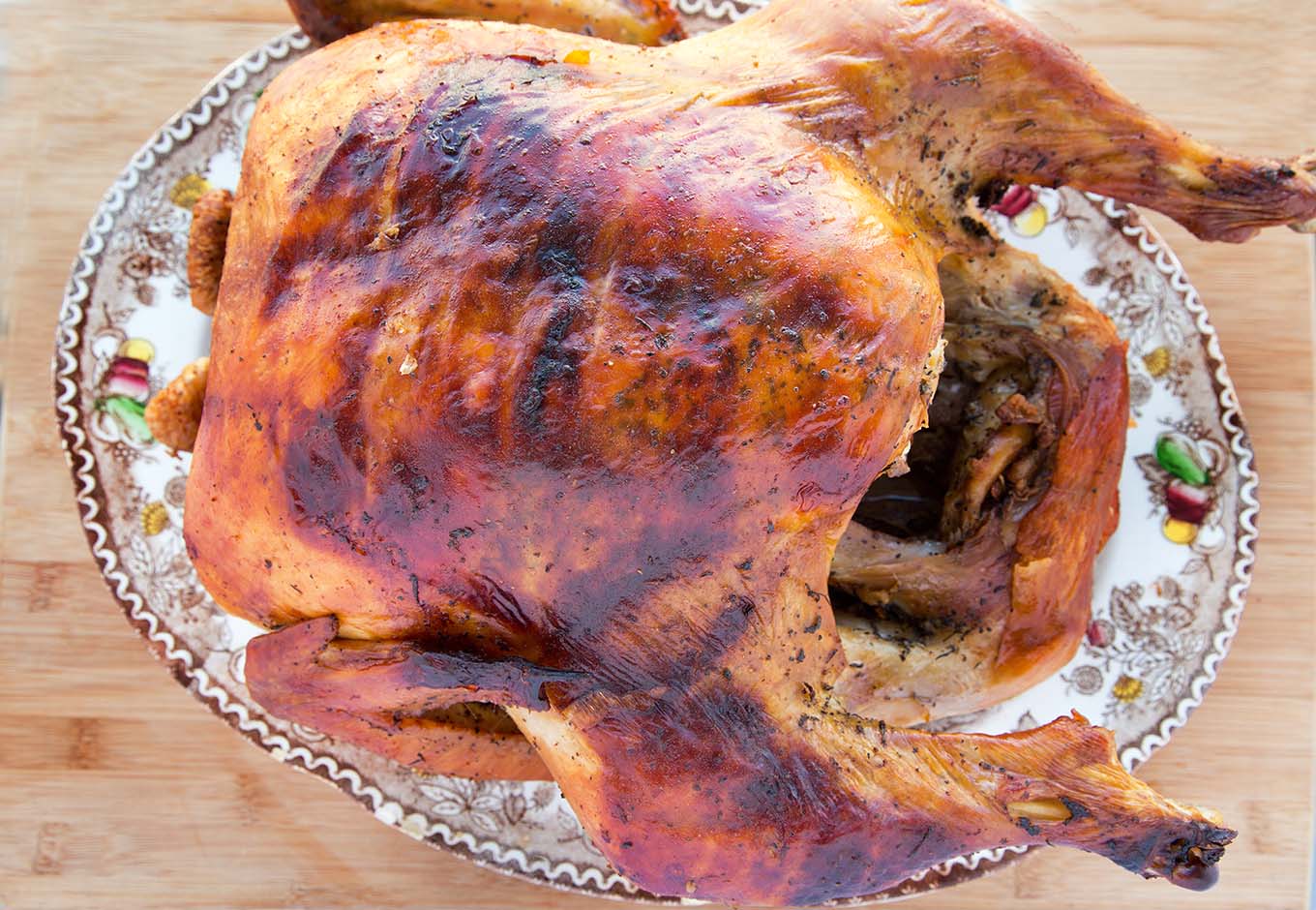
If you have leftover turkey, try my Old Fashioned Turkey Croquettes.
If you’re looking for a new Chef Knife, check out Misen. I’ve been using their kitchen knives for years!
Recipe FAQs
Dry-brining, also referred to as salting, is the process of rubbing the meat down with salt. The natural moisture content of the meat creates a concentrated brine that is naturally absorbed back into the meat before cooking.
A whole turkey needs two to three days of brining time. The dry-brining can be done days before Thanksgiving, giving you extra time on Turkey Day.
For the last 24 hours of the dry brine, leave the turkey uncovered in the refrigerator. This will dry out the skin, which in turn gives you incredibly crispy, golden-brown skin on the finished turkey.

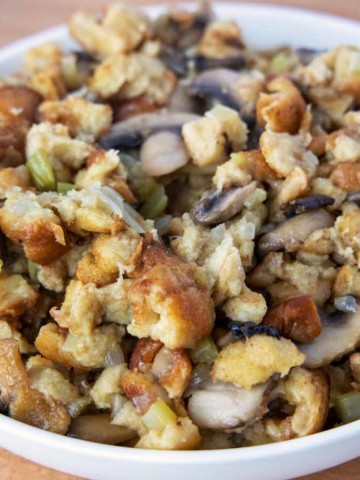
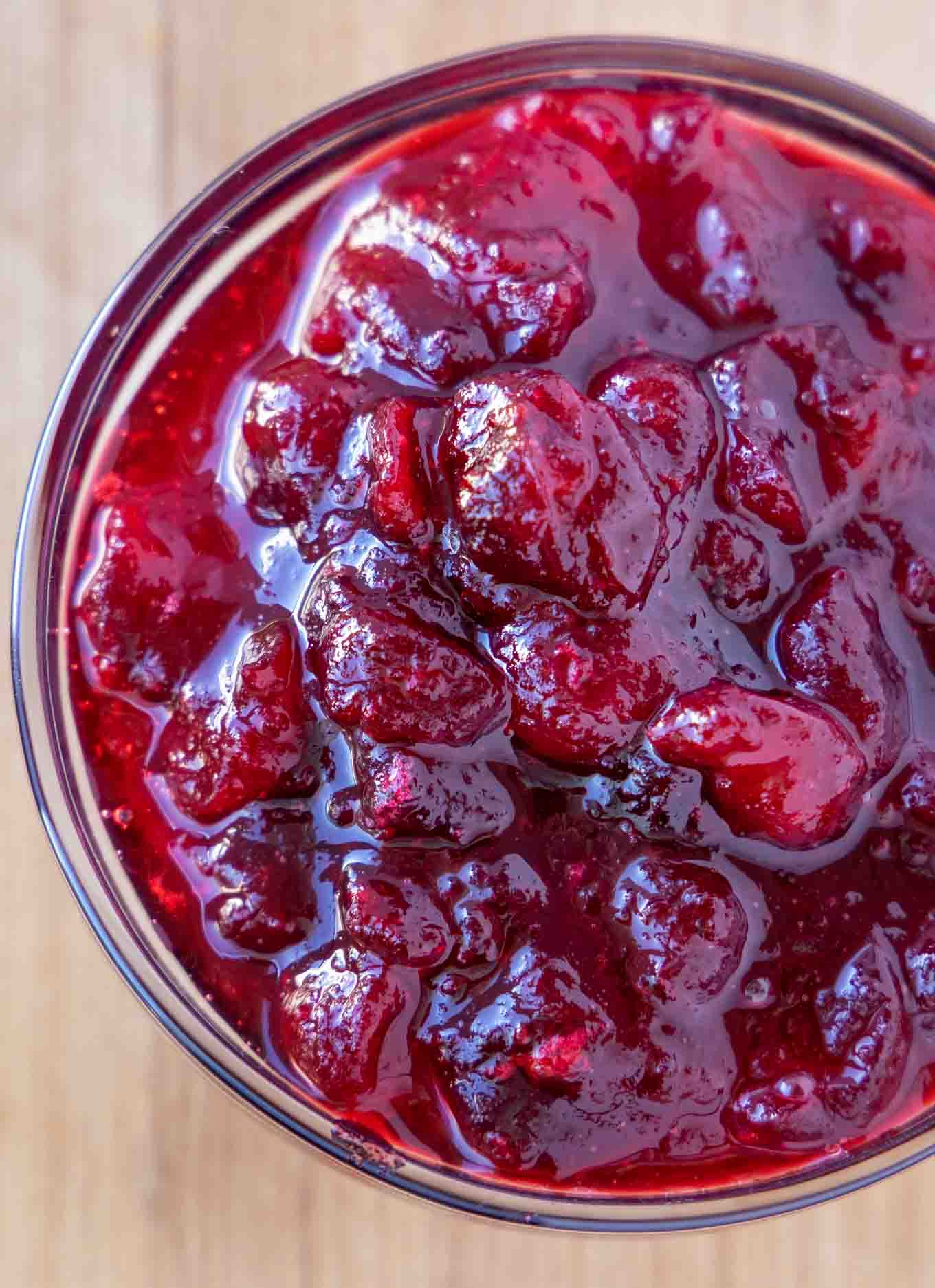
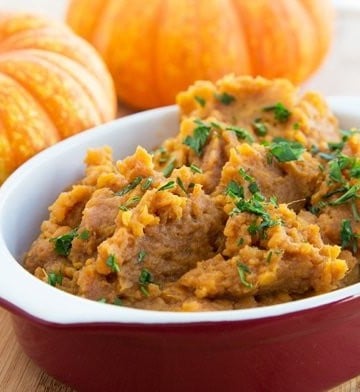
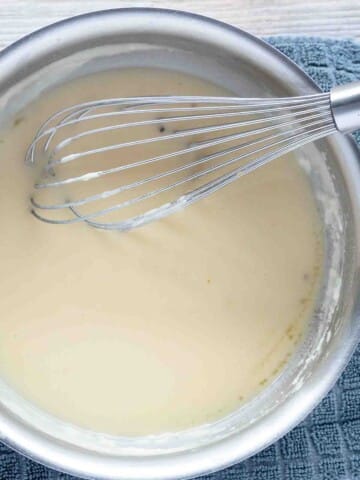
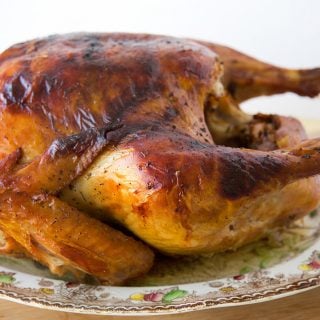
Emil Kross says
I’m going to do whatever it takes to serve a tasty turkey for Thanksgiving this year. The last few years have been a real disappointment. For some reason I just can’t get the bird to turn out moist and soft. Wish me luck!
Chef Dennis Littley says
Emil, if you’ve been brining your turkey for at least 48 hours you’re going to be rewarded with a delicious moist turkey!
Brenda says
Should I baste the turkey as well?
Chef Dennis Littley says
you can baste turkey after it has been flipped.
Ann says
What happens if you forget to take out the pop up timer before you start to brine your turkey?
Chef Dennis Littley says
it’s not a problem. You can leave it in or take it out.
I always advise using a insta read thermometer to check the internal temp of the turkey, the pop-up timers are unreliable and usually overcook the turkey.
Corey says
Chef, great recipe, have made once before. Slightly bigger crowd this year – so for a 24 pound turkey do suggest going longer at 425 breast side down? How long?
Chef Dennis Littley says
I would add another 15 minutes to the breast side down at 425 for that size turkey
Suzanne says
Hello, I was excited to try out your recipe, because I have a fresh, all-natural turkey, which I thought meant that it has no additives. Turns out it does have salt and seasonings added to make it more tender. 🙁 I’m going to reduce the amount of salt in the dry brine, as you recommended; but do you think it still needs the full 3 days of brining? Or should I just apply it the day before roasting? And would you still apply the brine underneath the skin? Thank you for your advice. I’ll be sure to get a bird with no additives next time!
Chef Dennis Littley says
I would do the brine 2 days before even though you’ll be using less salt. The other herbs will add to the flavor
Erin says
If I don’t feel comfortable flipping the turkey do I still start it out at 425 for 45 minutes?
Chef Dennis Littley says
yes you do. Don’t worry if you can’t flip it.
Chef Dennis Littley says
Keep an eye on the turkey, since its spending more time upright, you may have to tent the turkey with foil towards the last hour so it doesn’t get to dark
J says
Chef, I’ve used your recipe twice before with a whole turkey. Great results both times. The best I’ve ever had. This year I’m planning to do a six pound breast only and will follow the reduced measurements. My question is if the brining time of 3 days is the same for just a breast?
Chef Dennis Littley says
A turkey breast will benefit from brining, you can do as little as 48 hrs, but if you have time go for the full 3 days.
J says
Thanks so much. I’ll start the brine tomorrow!
Francesco says
I came across this recipe a few years ago, I have tried every iteration to cook a turkey and this was hands down the best. It will be my go to hence forth, but I am a tinkerer. I was thinking about swapping the coarse kosher salt for coarse Himalayan salt, love pink hue for presentation. Have you ever done it or is the pink salt strong enough for the brining process? I do use a 20lb turkey and start the brine Sunday for Thursday dinner. Thank You
Chef Dennis Littley says
As long as you’re using coarse Himalayan salt, it’s okay. It’s strong enough, that’s not a problem.
The biggest issue with using different salt is the size of the grain and the chance someone may use too much salt by changing from kosher salt. As long as you use a coarse grind Himalayan or Sea salt works.
Francesco says
Thanks so much!! I got a 21 pound bird, in the recipe it said at one point 20-30 minute rest and also 30-1hr rest i think i did 30 or so last time, should it be longer?
Chef Dennis Littley says
30 minutes should be enough to let it settle
Steve says
Just a quick word of appreciation. I am really excited to try this… been doing family turkeys for several decades now and doing different methods… this looks choice!
Happy Thanksgiving, everybody!
janelynn says
Many years ago I read that spreading a cheesecloth across your turkey when roasting will eliminate the need for basting b/c the wet cloth will keep the top moist. And by the way, the wing, which is often discarded, is the most flavorful and moist part of the bird.
Christopher P Raaths says
Hello Chef,
Have you heard about using some baking powder in the mix? Someone told me it aids in a crispier skin. I’m always up to trying new things. Have you ever tried this? I found your brine recipe in a search and I enjoy your roasting method. Our turkey’s have evolved over the years from dry and boring (everyone hoping the side dishes are better) to the turkey being the star of the show now. For those who are new to this or to the recipe, his recipe and methods are really the best, tried and true. I’m actually looking forward to a turkey now.
Chef Dennis Littley says
Baking Soda or Baking Powder can be used to help make the skin crisper but I’m not sure how it would react with a brined turkey. I’ve never used it.
The idea is to let it dry out for the last 24 hours before roasting to help give you crisper skin.
Alexis Shotwell says
I am in a small town, I am only able to find your basic frozen turkeys that have a salt solution. Should I do anything different? Less salt?
Chef Dennis Littley says
Reduce the salt to 1 tablespoon and use the rest of the ingredients as listed in the recipe.
Erin says
I plan on following this recipe, but breaking down my turkey to cook in parts instead of leaving it whole. Should I brine prior to breaking down my turkey or vice versa?
Chef Dennis Littley says
You could do it either way, I would probably brine it first if it was me.
Dan B says
Loved this two years ago. Thinking I might want to use this recipe with a spatchocked Turkey. Any advice on changing the cooking time or other instructions?
Pat L says
Hello Chef,
I cook for a large group and it requires I cook the birds on Wednesday and reheat on Thanksgiving Day. I get four fresh boneless skin on turkey breast and one fresh spatchcocked turkey. I’m going to give your dry brine a try this year. Any suggestions for reheating so the meat doesn’t dry out after spending all the time dry brining for juiciness?
Chef Dennis Littley says
Cut the turkey into smaller pieces, but leave the wings and drumsticks on the bone. For everything else, make sure the turkey is sliced and try to keep the pieces similar in size for even reheating.
Add two ingredients for reheating leftovers — moisture and fat. For turkey, stock and butter are the best choices. Cover with foil.
Reheat low and slow: This method isn’t the fastest, but you want to avoid driving moisture away from the already-cooked meat, so 30 minutes in a 350°F is best. Remember that all leftovers should be reheated to a minimum of 165°F.
Leo H says
Hi Chef: Don’t have a good history with brining. The wet-brines were eipc disasters due to logistics (spillage, no room, etc). The past several years I have tried all different dry brines following the techniques exactly as instructed. I only use Morton’s kosher salt. The results in all cases was waaay too salty, and I can’t use the drippings in the pan ever! The thought of applying dry brine directly under the skin just scares me. You say not to rinse … but I’m wondering if that’s the answer to this problem. I also have to stuff the bird because I can’t deal with the complaints. 20 people this year for Thanksgiving and I’d like to finally get it right. Going with two 12-pounders. Got anything for me?
Chef Dennis Littley says
You’ll find all the information you need in my blog post Leo.
Maria says
Hi Chef, thank you for your fantastic recipe and tips! You truly care about what you do and about helping others!!
My almost 22 lb turkey will have about 60 brining hours total. I’m going to be stuffing it, should I rinse or wipe out the inner cavity just before stuffing? I’m worried that the stuffing will be salty if not. I can’t flip it because it’s stuffed, do you still recommend 45 minutes at 425 to start?
Chef Dennis Littley says
you can definitely wipe out the inside of the turkey. As for not flipping, that’s a good decision. Since you’re not flipping lets go with 30 minutes at 425, just keep an eye on the turkey since the prolonged time may get the skin too dark. You can always tent it with foil if that happens and please make sure to use a digital thermometer to check the temp of the bird and the stuffing to make sure its gone past 165
Maria says
Will do! Thank you so much Chef for your time and your advice!!
Brenda E Luckett says
Hi Chef,
I’m going to try this this year and am excited! For the onions, carrots, celery, etc you mention putting them in the cavity and then into the bottom of roasting pan. Is this two sets or are you switching it all to the bottom for roasting?
Thanks,
Brenda
Chef Dennis Littley says
that would be two sets of the veggies Brenda.
Just make sure you give yourself the 3 days to brine for the best results.